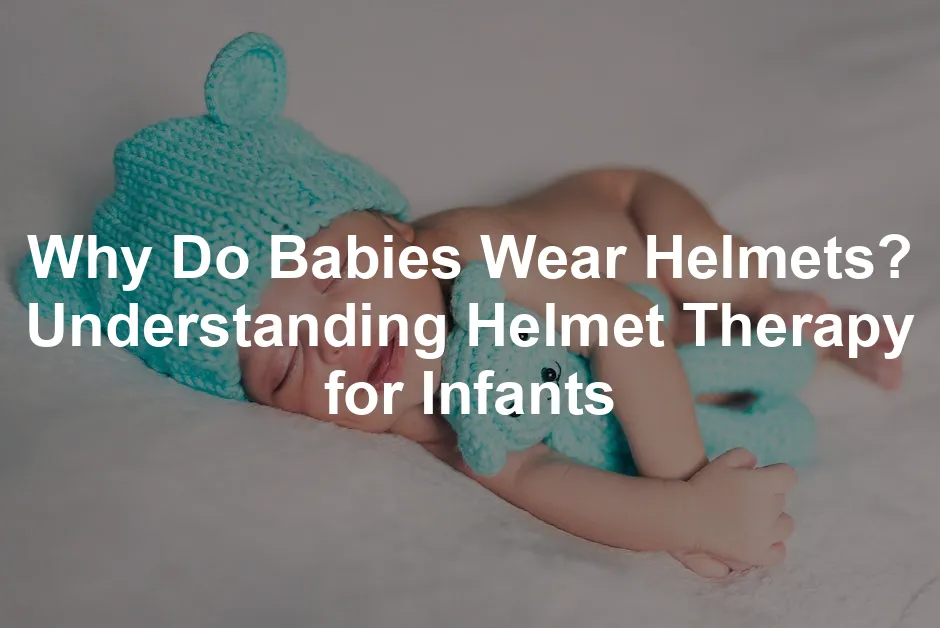
Why Do Babies Wear Helmets? Understanding Helmet Therapy for Infants
Introduction
Have you ever wondered why some babies wear helmets? Many assume helmets are for safety, like biking. However, they often serve a medical purpose. Understanding the reasons behind helmet therapy is crucial for parents. It’s essential to recognize the conditions that lead to this treatment.
Summary and Overview
Helmet therapy, also known as cranial orthosis, is an effective method for correcting head shape issues in infants. Early intervention is vital, as the baby’s skull is still developing. Addressing these irregularities can prevent potential complications later in life.
Conditions that may require helmet therapy include positional plagiocephaly, brachycephaly, and craniosynostosis. Each condition affects head shape differently, and the need for a helmet is determined by a medical professional. Pediatricians or specialized orthotists play a crucial role in assessing whether a baby needs helmet therapy. They consider the severity of the condition and the age of the child before making recommendations.
For new parents, understanding baby care can be overwhelming. A great resource is the Pediatrician Recommended Baby Care Book. It covers everything from diapering to health concerns, making it an essential read for every parent.
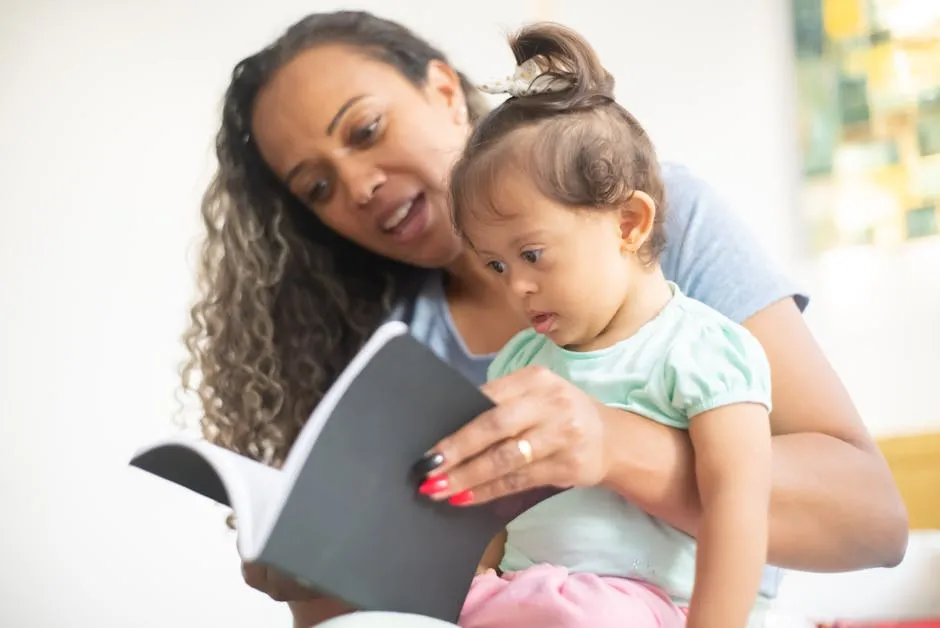
What Is Helmet Therapy?
Helmet therapy is a treatment designed to reshape a baby’s skull. The primary goal is to encourage proper cranial growth and correct irregular shapes. It is typically prescribed for infants between 4 to 6 months of age when their skulls are still malleable.
Before starting helmet therapy, a thorough medical evaluation is necessary. During this assessment, professionals will examine the baby’s head shape and take precise measurements. This evaluation is crucial for ensuring the helmet fits correctly and provides optimal results.
Statistics show that conditions like plagiocephaly affect about 1 in 2 babies, making helmet therapy a common solution. Parents should consult their pediatrician if they notice any head shape irregularities in their child. Early intervention can lead to better outcomes, making it essential to be proactive about your baby’s head shape.
Additionally, a Infant Head Shaping Pillow can be a helpful tool to support your baby’s head during sleep, promoting healthy development while they snooze.

Common Conditions Treated with Helmet Therapy
Helmet therapy addresses several conditions affecting infant head shape. These conditions often arise due to the soft nature of a baby’s skull. When a baby’s head develops irregular shapes, intervention can help correct these issues and prevent future complications.
Plagiocephaly
Plagiocephaly is often called flat head syndrome. It occurs when one side of a baby’s skull flattens. This condition can develop from prolonged pressure on one area of the head, typically from sleeping on the back or spending too much time in car seats. Symptoms include a noticeable flat spot on one side and asymmetry in head shape. While plagiocephaly isn’t harmful to brain development, it can lead to cosmetic concerns.
Treatment usually starts with repositioning techniques. Parents are often encouraged to change the baby’s position during sleep and playtime. If these methods are ineffective, a helmet may be recommended for older infants, usually between 6 to 8 months. The helmet gently reshapes the skull by allowing growth in the flat areas while restricting it in others.
As part of your baby’s care routine, consider using Baby Monitor with Video and Audio to keep an eye on your little one while they nap or play. Peace of mind is priceless!

Craniosynostosis
Craniosynostosis is a more complex condition. It occurs when one or more skull sutures close too early. This premature fusion can restrict brain growth and alter the skull’s shape. Symptoms may include an uneven skull, abnormal fontanels, or a hard ridge along the sutures.
In most cases, surgical intervention is necessary to correct the fused sutures. After surgery, helmet therapy is often prescribed to help reshape the head as the baby grows. This combination ensures the skull develops correctly and can accommodate brain growth.
Brachycephaly and Scaphocephaly
Brachycephaly involves flattening at the back of the head, resulting in a wide and short head shape. This condition may arise from similar causes as plagiocephaly, such as prolonged positioning. Treatment options include repositioning and helmet therapy.
Scaphocephaly, on the other hand, is characterized by an elongated head shape. It occurs when the sagittal suture closes too early. This condition may require surgical intervention if severe, followed by helmet therapy to assist in reshaping the skull.
Both conditions highlight the importance of early diagnosis and treatment. Parents noticing irregular head shapes should consult a pediatrician for assessment and possible referral to a specialist. Early intervention can lead to better outcomes and healthier head shapes as the child grows.
And while you’re at it, consider investing in a Baby Health and Safety Guide. It’s like having a pediatrician in your pocket—minus the co-pay!

How Helmet Therapy Works
Helmet therapy, or cranial remolding, helps reshape a baby’s skull. The process starts with a custom fitting, tailored to each child’s needs. An orthotic specialist will take precise measurements of your baby’s head, often using 3D scans. This ensures the helmet fits snugly and comfortably.
Once fitted, the helmet applies gentle pressure on specific areas of the skull. It allows room for growth in flatter areas while restricting growth where it’s needed. Regular adjustments are crucial, as your baby’s head shape changes over time. Specialists typically monitor progress every few weeks, making necessary modifications to the helmet.
Unlike sports helmets, which protect against impacts, cranial helmets focus solely on reshaping the skull. They are designed for comfort and adjustability, ensuring babies can wear them throughout the day. Statistics show that helmet therapy is effective, with success rates reaching up to 90% when treatment begins early.
If you suspect your baby may need helmet therapy, consult a specialist for a custom fitting. Early intervention is key to achieving the best results for your child’s head shape.
Don’t forget to have a Baby First Aid Kit on hand. Because you never know when a little boo-boo might need some TLC!
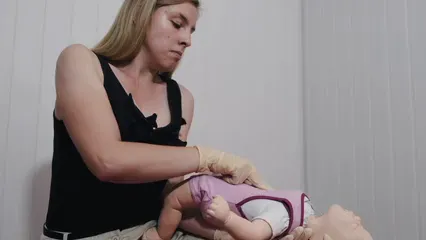
Duration of Helmet Therapy
Babies typically wear helmets for about 23 hours each day. This consistent wear is essential for optimal results. The treatment usually lasts between three to six months, depending on the severity of the condition.
Factors influencing treatment duration include the child’s age and how well they respond to therapy. Regular monitoring helps assess progress and determine if changes are needed. As the baby grows, adjustments to the helmet will ensure it continues to fit properly.
Parents should track their baby’s progress closely and consult with specialists regularly. This proactive approach will help ensure the best outcomes during helmet therapy.
And while you’re keeping track of milestones, why not document them with Baby Milestone Cards? They’re a cute way to remember those first precious moments!
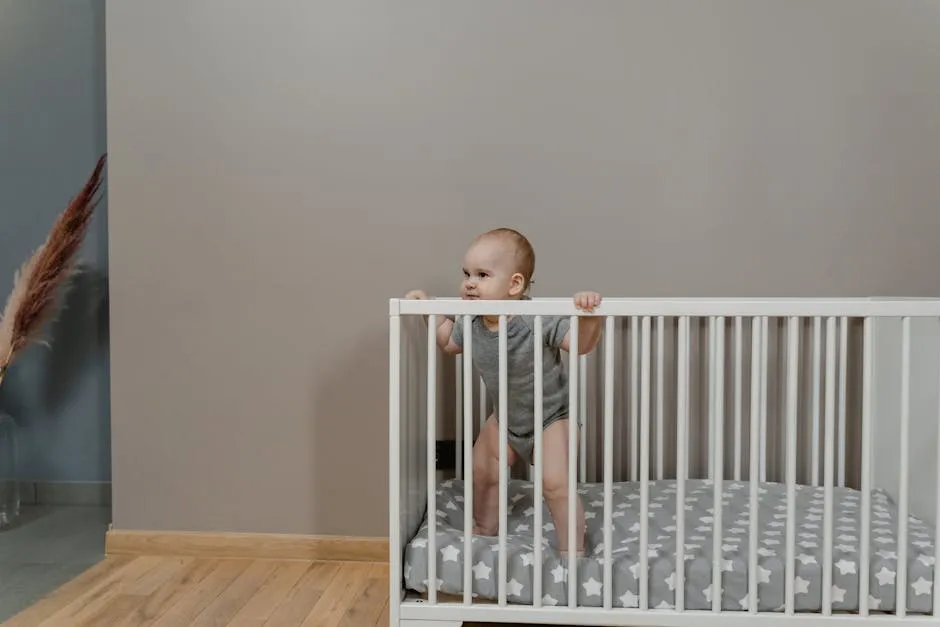
Comfort and Care for Babies in Helmets
When your baby starts wearing a helmet, comfort is key. Initially, babies may need time to adjust to the sensation of wearing a helmet. This adjustment period typically lasts a few days. It’s important to monitor how your baby reacts. If they seem restless or fussy, it might be a sign that the helmet needs adjustment.
Common discomforts include skin irritation or pressure marks from the helmet. Ensure the helmet fits snugly but not too tightly. You can alleviate discomfort by checking for proper fit regularly. If you notice any redness or irritation, consult your pediatric specialist for adjustments.
Cleaning the helmet is also essential for your baby’s comfort. Use a damp cloth to wipe down the outer shell daily. For the interior, use isopropyl alcohol to disinfect and keep it fresh. Avoid soaking the helmet in water, as excessive moisture can damage it.
Remember, consistent care and maintenance enhance comfort and effectiveness. If you have concerns about your baby’s helmet care, don’t hesitate to reach out to specialists for personalized tips and guidance.
And speaking of care, don’t forget about those adorable bath times! Make it easier with a Baby Bathing Essentials Set that has everything you need for a splash-tastic experience!
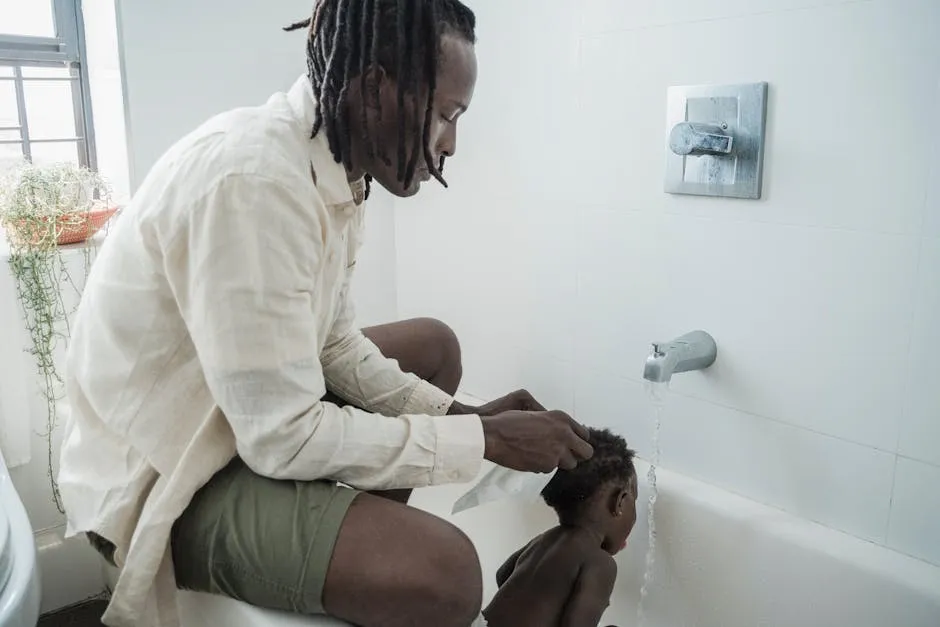
Addressing Common Concerns about Helmet Therapy
Many parents worry that helmet therapy may be painful or harmful for their babies. The truth is, helmet therapy is designed to be safe. Most babies adjust well and don’t experience pain during the process. It’s normal for parents to feel anxious, but knowing that this therapy is non-invasive can provide peace of mind.
Emotional support is crucial during this time. Babies may need extra cuddles and reassurance as they adapt to wearing the helmet. Your calm demeanor can help ease their anxiety. Engage in gentle playtime to keep their spirits high.
Community support is also beneficial. Many parents share their experiences in support groups, which can be incredibly helpful. You can learn from others facing similar situations. Sharing feelings and tips can create a strong support network.
If you have concerns, consider joining local or online parenting groups. Encouraging conversations can help normalize the experience and provide valuable insights. Remember, you’re not alone in this journey.
Also, don’t forget to keep your little one safe at home with Infant Safety Gates. They’re a must-have to keep your curious crawler out of trouble!
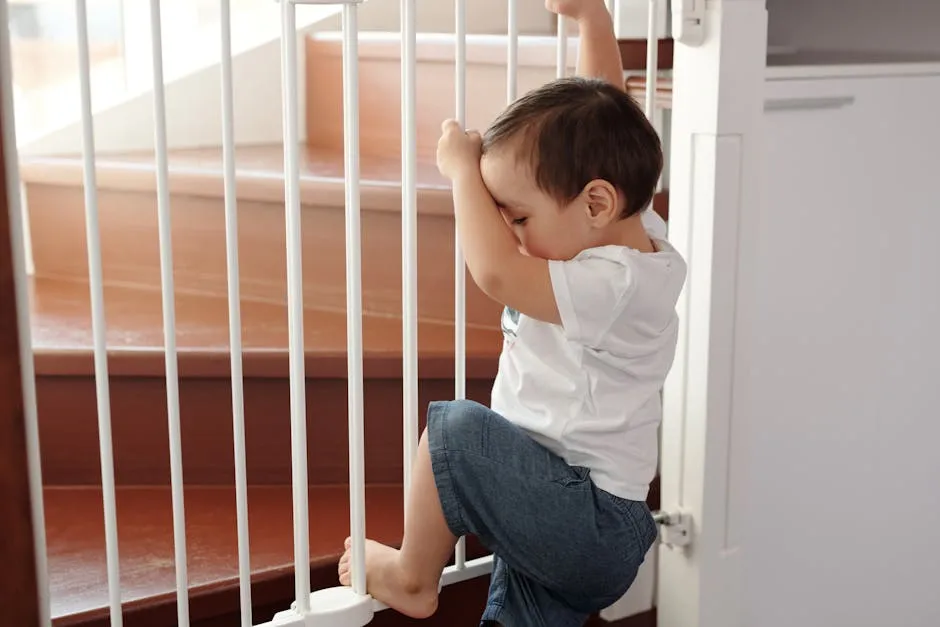
Conclusion
Helmet therapy is essential for treating certain head shape conditions in infants. It helps to gently reshape the skull, providing a more natural appearance and preventing future complications. If you notice irregularities in your baby’s head shape, it’s vital to seek professional advice from a pediatrician or specialist. They can evaluate your child and determine if helmet therapy is necessary. Remember, helmet therapy is a common treatment option, and many babies successfully benefit from it. You are not alone in this journey, and support is available.
And while you’re at it, consider documenting your baby’s journey with a Baby Photo Album. It’s a wonderful way to capture those fleeting memories!

FAQs
What are the signs that my baby might need a helmet?
Look for head shape irregularities, such as flat spots or asymmetry. If your baby has noticeable flattening on one side or a misshapen appearance, it’s time to consult a doctor. Early detection is essential for effective treatment.
Can helmet therapy correct any head shape issues?
Helmet therapy primarily addresses conditions like plagiocephaly, brachycephaly, and scaphocephaly. However, it may not correct all head shape issues, especially if they are due to other medical conditions. Consult a specialist for personalized advice.
How should I care for my baby’s helmet?
Clean the helmet daily with a damp cloth on the outside. For the interior, use isopropyl alcohol to disinfect. Avoid soaking the helmet. Regular cleaning helps prevent odor and skin irritations, ensuring comfort for your baby.
Is helmet therapy safe for my baby?
Yes, helmet therapy is generally safe. Most babies adjust well and do not experience pain. Ensure the helmet fits properly to avoid discomfort. Regular check-ups with a specialist will help monitor your baby’s comfort and progress.
At what age should helmet therapy begin for optimal results?
Helmet therapy is most effective when started between 4 and 6 months old. At this age, the skull is still malleable, allowing for better reshaping. Starting later may reduce the effectiveness of the treatment.
Will my insurance cover helmet therapy?
Insurance coverage for helmet therapy varies. Some plans may cover it, while others may not. It’s best to check with your provider for specifics on coverage and potential costs associated with helmet therapy.
How do I choose the right specialist for helmet therapy?
Seek a qualified pediatric orthotist or craniofacial specialist for helmet evaluations. Ask for recommendations from your pediatrician or look for certified professionals in your area. Ensure they have experience in fitting cranial helmets for infants.
Please let us know what you think about our content by leaving a comment down below!
Thank you for reading till here 🙂
All images from Pexels




